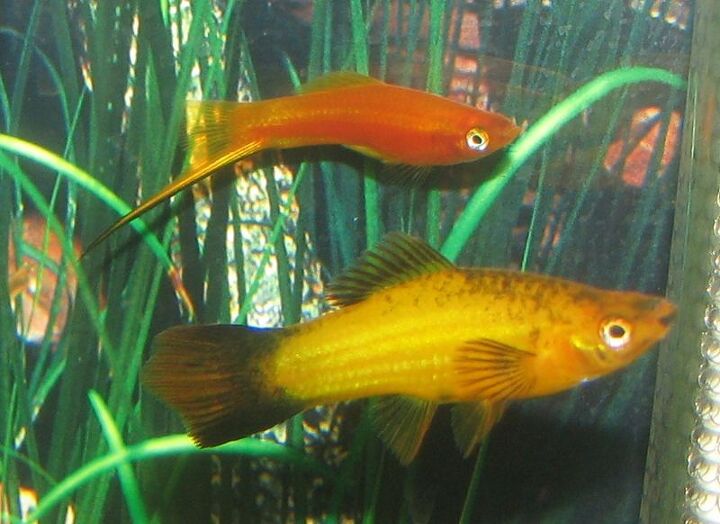
Swordtail General Description
A relatively hardy and easy to care for livebearer, the swordtail is one of the most popular aquarium fish species among beginner aquarists. Swordtails get their name from the distinctive sword-like extension on the male’s tail fin, which can sometimes grow almost as long as their bodies. Swordtails are also the largest growing species among livebearers and adult swordtails can reach up to six inches in length.
A relatively hardy and easy to care for livebearer, the swordtail is one of the most popular aquarium fish species among beginner aquarists.
Origins
Swordtails are native to the North and Central areas of America including Veracruz, Mexico and northwestern Honduras.
Color
While wild swordtails are mostly a drab green in color, most aquarium varieties come in a range of colors including red, orange, black, tuxedo, gold, spotted, neon, albino, silver and blue.
Maintenance and care

Swordtails are relatively hardy and can survive in a range of aquarium conditions. However, they thrive when housed in fairly large aquariums with clean water conditions. It is also advisable to add a little bit of salt into the swordtail aquarium. Swordtails are a very active species of fish and require large open spaces for swimming. They are also powerful jumpers and care should be taken to ensure that the swordtail’s aquarium is carefully covered.
Swordtails are generally very peaceful and make excellent community fish. Males can however turn aggressive towards each other once they reach sexual maturity, so it is advisable to house only one male with several females in an aquarium. Swordtails also shouldn’t be kept with larger species of predatory fish like cichlids which might pretty on them.
Feeding
Swordtails are primarily herbivores and can be fed on a diet of flake based foods or algae.
Swordtails get their name from the distinctive sword-like extension on the male’s tail fin, which can sometimes grow almost as long as their bodies.
Breeding
Like most livebearers, swordtails reproduce quite prolifically and require no special effort when breeding. They reach sexual maturity at around three months old and given adequate hiding spaces swordtails can quickly overpopulate an aquarium within a year. When breeding swordtails, it is advisable to remove pregnant females into separate breeding tanks. Swordtails will quickly devour their own fry and breeders should use a breeding box or a heavily planted aquarium to ensure that the fry survive.
Aquarium varieties
Lyretails, Simpson Swordtails, Wagtails.
Photo credit: Ltshears/Wikimedia; Valentin Hintikka/Flickr















